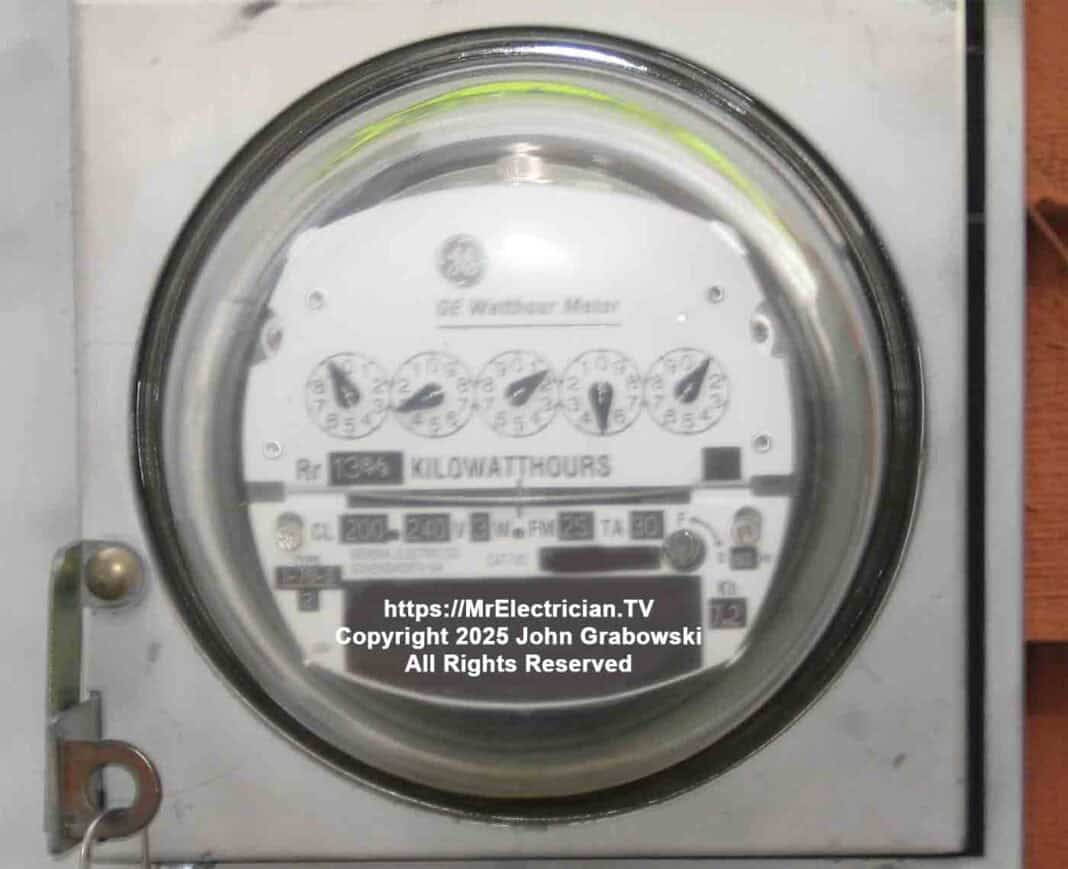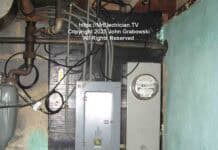Dear Mr. Electrician: Why has my electric bill gone up suddenly?
Answer: There can be many reasons why your electric bill went up suddenly.
NOTE: Some text links below go to applicable products on Amazon. As an Amazon Associate, I earn from qualifying purchases. Using my links helps to keep this website FREE.
First thing to do is when checking why your electric bill went up is to see if it is based on actual meter readings or if it is an estimated bill. If it is estimated, contact the power company and request an actual meter reading.
Next check the actual Kilowatt-Hour usage (KWH). See if the electric bill shows an increase in power consumption. If there is an increase power consumption, try to figure why the electric bill jumped up since the previous bill. Did you use air conditioning or heating more? Did you have house guests visiting or contractors working? Did you buy a new major appliance?
Next check the rates on your electric bill. This can be very confusing due to the way separate generating and delivery charges are billed. There can be summer rates and winter rates. Also, depending on the plan you have from the power company, you could have different rates for day and night and weekends and weekdays. If you have some older electric bills or can retrieve them online, do a comparison to the electric rates per kilowatt-hours (KWH).
If your electric bill has gone up due to a rate increase, contact the power company to ask about different types of service plans that might work better for your lifestyle.
Commercial electricity users have an additional charge on their electric bill called demand charges. If their power consumption goes over a certain level anytime during the monthly billing cycle, no matter how short in duration, they get hit with a higher demand charge for the whole month in addition to the kilowatt hours used. That incentivizes commercial customers to keep their usage down by using energy saving technology.
If the high charges are not explained by billing and rate differences, it’s possible that something(s) is using electricity and causing your electric bill to go up.
OTHER REASONS WHY ELECTRIC BILL WENT UP
I have seen a number of times where a big old single family house was converted to multiple apartment units. The existing wiring was never completely separated when the house was converted. Consequently, it is possible that your wiring is supplying power to another unit. The reason for the sudden increase is because the other tenant got something new that uses a lot of electricity such as a portable heater or a window air-conditioner.
Somewhere on the premises is an appliance, or heater, or something else that is using electricity. Maybe a sump pump is running continuously? An attic fan that is running more due to summer? Maybe adjust its thermostat so it’s not running all night.
It’s also possible that an appliance is defective and is leaking small amounts of electricity to neutral or ground, but not enough to cause the circuit breaker to trip.
With an ammeter, an electrician can try testing each wire inside the main electrical panel to check the loads for each circuit and the main service conductors to help identify a circuit that is causing your electric bill to go up. The electrician can help you label each circuit and possibly turn off any unidentified high amp-drawing circuit breakers.
Electricity theft is real. It’s possible someone is stealing electricity from you. Look for mysterious wires coming out of your electric meter or main electrical panel.
You might be interested in my article about basement electric meters.
To help keep this website FREE, please use this Amazon link for your purchases. As an Amazon Associate, I earn from qualifying purchases.
Click for a FREE copy of my book “Almost Everything You Need To Know To Repair a Bathroom Exhaust Fan In Your Home.”
Get your required “Emergency Disconnect, Service Disconnect” labels and stickers to satisfy the 2023 National Electrical Code requirements in article 230.85(E)(1) and (2) by going to my Zazzle Store here.
Visit my Link Tree for social, stickers, and merchandise links.





